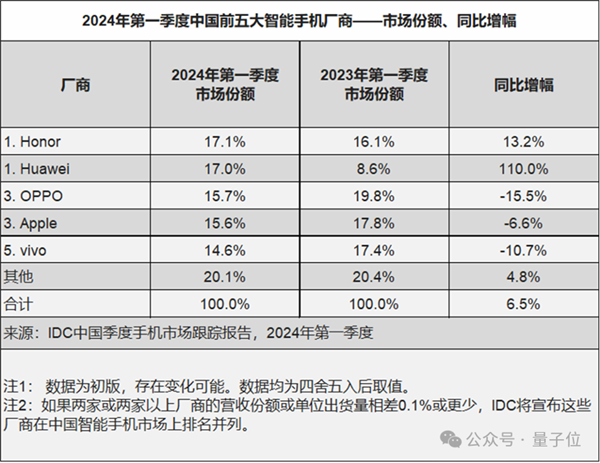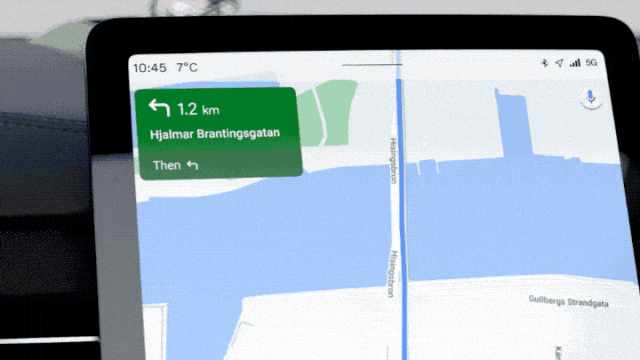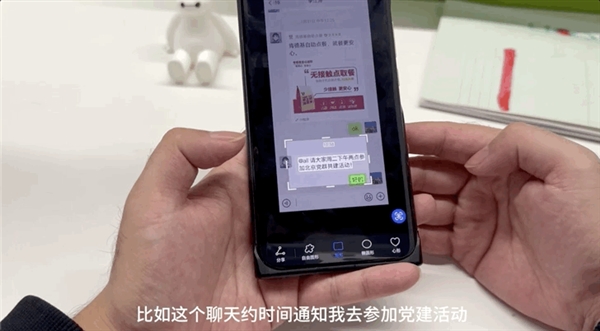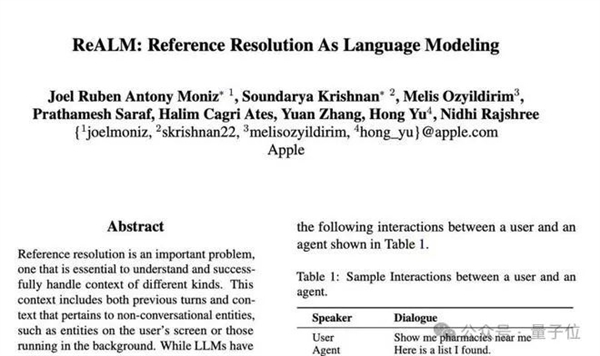 Mobile Tutorial
Mobile Tutorial
 Mobile News
Mobile News
 There are many manufacturers betting aggressively on AI mobile phones. Why is this one the top one?
There are many manufacturers betting aggressively on AI mobile phones. Why is this one the top one?
There are many manufacturers betting aggressively on AI mobile phones. Why is this one the top one?
This year’s Chinese mobile phone market is undergoing major changes.
The intersection of two major variables has begun to show its influence and make the market hot again:
First, Huawei has made a full comeback with unprecedented grandeur.
Secondly, AI has stirred up the situation and become a battleground for military strategists.
Under this fusion, the throne of the first quarter now belongs to it——
Glory.

AI has become a key growth engine for mobile phone manufacturers
Huawei’s comprehensive return adopts the most low-key posture and has gained the highest level of attention in history .
There was a heated discussion in the market that after Huawei’s return, “Honor will be the most affected.”
But as the latest data comes out, this is not the case.
The latest quarterly mobile phone tracking report released by IDC (International Data Corporation) shows that in the first quarter of this year, China’s overall smartphone shipments were approximately 69.26 million units. Specifically, in terms of manufacturers, Honor has a market share of 17.1%. Winning the first place "has become an important force in driving the market to continue to improve."

Wang Jiping, Vice President of IDC China, believes that this time Honor reaches the top, AI has become a key growth engine:
At the beginning of this year, Honor released the AI MagicOS 8.0, a capable full-scenario operating system, is blessed with a large magic model and uses platform-level AI as the core and base, bringing smart services that "the more you use it, the better it will be, and the more you use it, the better it will understand you". The first Magic6 series equipped with MagicOS 8.0 has been well received by the market.
According to Wang Jiping, thanks to the increase in AI functions and all-round upgrades such as images and screens, the shipment volume of the new flagship Magic6 series in the first quarter exceeded that of the previous generation in the first two quarters. Total shipment volume;
On the other hand, driven by the Honor Magic V2 equipped with platform-level AI and other folding screen family products, the share of Honor folding screen mobile phones has increased by as much as 675.4% year-on-year since last year.
Relying on the performance of Honor Magic6 series and folding screen family, in the first quarter of this year, Honor’s high-end market share above US$600 increased significantly, with shipments increasing by 123.3% year-on-year. The high-end market share was second only to Apple and Huawei.
手机AI≠AI手机
Then here comes the question——
AI mobile phone is a topic that every terminal manufacturer must cue after the big model application storm begins. In the first quarter, major domestic and foreign Android manufacturers that made aggressive bets launched their first products one after another.
Everyone is ambitious, and the bottom line is of course that we cannot lag behind in this competition.
Why is Glory the one that stands out?
Glory CEO Zhao Ming believes that the key is that "mobile phone AI is not equal to AI mobile phones":
In terms of the technical capabilities and experience of using AI on mobile phones, mobile phones provide platforms and algorithms.
But only when AI becomes the foundation and is ubiquitous on mobile phones can it be called an AI mobile phone.

Looking at the AI mobile phones that appeared on the market in the first quarter, it is not difficult to see that although the promotional words are tightly bound to the "big model" and "AIGC", in the In terms of specific landing routes, there are actually differences in genres.
The route chosen by most manufacturers is to take the lead in focusing on applications. Based on AIGC technologies such as text generation and image generation that have been refined in the cloud, AIGC applications for device-side and device-cloud collaboration are launched on mobile phones. For example, more intelligent portrait cutout, translation, meeting summary, etc.
Manufacturers represented by Honor are doing the opposite.
Zhao Ming has publicly stated many times that mobile phone manufacturers should avoid falling into the trap of application explosion. In the field of AI, the core value that terminal manufacturers can bring to consumers lies at the operating system level.
Specifically, the latter route actually starts from first principles, considering that the core issues that consumers really care about are:
Whether the vigorous big model and AIGC can really Bring a better and more difficult-to-replace practical experience to terminal devices.
So, what is the experience that can be truly enhanced after large models enter the mobile phone?
The most intuitive thing is to move from "people looking for services" to "services looking for people".
At the level of technological exploration, Qualcomm has demonstrated the ability of intelligent assistants to proactively make decisions based on user habits: when planning a travel route, it will proactively ask if you want to buy a cup of coffee at a passing coffee shop.

On a practical level, you can take Honor as an example:
First of all, MagicOS 8.0, which uses platform-level AI as the new core, brings the industry's first Human-computer interaction based on intent recognition.
It can identify human-computer interaction intentions and is a system-level active service.
When traveling, when you arrive at the subway station, your mobile phone will automatically pop up the bus code; when you arrive at the airport, your boarding pass will automatically pop up; when you arrive at the cinema, your ticket collection code will pop up.
You can also notify the leader of a meeting in the group. Just take a screenshot and click "Create Schedule", and the system will be able to identify the time, location, and meeting topic, and create the corresponding schedule in the calendar.

One of the core functions, the "any door" based on multi-modal capabilities, can complete the "one-step direct" transfer between apps.

Similar to this, there are many more experiences brought by any door. To sum up, it is to simplify the traditional multi-step operation into a one-step operation, and achieve the goal in one step.
Behind the user experience, Honor also more clearly proposed the four-layer AI architecture theory of terminal devices:
The first layer is at the system level, using AI to enable cross-system and cross-device fusion. That is to say, different operating systems can be seamlessly connected through AI decision-making to realize data sharing between mobile phones, tablets, PCs and other devices.
The second layer is at the stand-alone level, using AI to reconstruct the operating system. Based on artificial intelligence technology, the terminal will understand you better the more you use it, and the more you use it, the better it will be.
The third layer is at the application level, that is, the application of AI on the terminal side.
The fourth layer is AI device-cloud collaboration. That is, on the premise of ensuring user privacy and security, network-side AI such as AIGC and cloud large models can be presented on mobile phones.

In fact, this four-layer architecture also outlines the current competitive situation in the AI mobile phone market:
The third and fourth layers are easier to penetrate, Be the first to usher in the outbreak.
But the first and second layers are more critical to terminal manufacturers and are the core values that differentiate terminal companies from Internet companies.
The next stage of mobile phones: intelligent agents
Using the currently hotly debated technical hot words to make a brief summary, these two different application routes can be divided into "tool schools" ” and “intelligent school”.
The so-called tool school pays more attention to the tooling of single-point AIGC technical capabilities, emphasizing the direct efficiency improvement brought by tool changes in specific task scenarios.
The "intelligent school" pays more attention to the in-depth integration of large models, AIGC capabilities and terminal operating systems, that is, it aims to give full play to the capabilities of large models in perception, memory, understanding, reasoning, and decision-making, and continuously learn from users Habits, understand user intentions, and schedule various capabilities of the terminal around user needs.
Compared with launching AIGC applications to solve certain types of problems, the layout of "Intelligent School" appears to be more long-term. The core is people-centered and meets consumers' essential needs for mobile phone intelligence:
On the one hand, simplify the human-computer interaction model so that terminals such as mobile phones can become more and more like human assistants, actively adapting and matching people's needs.
On the other hand, it can make full use of the large amount of user personalized data retained in the terminal, allowing the intelligent assistant to self-evolve and continue to grow according to user characteristics.
In fact, this is also the key to whether AI mobile phones can become the new form of mobile phones in the third stage just like smart phones replacing functional phones-
Through terminal devices such as mobile phones, can we really Can you find a "Jarvis" that can learn by itself and continuously adapt to user needs?

# However, it is worth noting that the route of advanced mobile phone intelligence, even in the current era of rapid progress in large-scale model technology, still faces technical challenges that cannot be underestimated.
The key difficulty is that the agent route involves using AI to reconstruct the operating system.
Zhao Ming also further explained this. Compared with applications, the construction of this core capability is more threshold:
Honor’s route is to first develop platform-level AI and AI mobile phones. Core capabilities are built. To a certain extent, we have slightly controlled and inhibited the development of mobile AI applications because we were worried that we would place too much emphasis on single-point applications and neglect the construction of core capabilities.
On this basis, at this node of 2024, we will work hard on AI end-side applications. There is no threshold in itself because it does not involve the reconstruction of the operating system.
This also explains why Honor took the lead in the competition of AI mobile phones in the first quarter.
First of all, it is deployed early, so it can take the lead when cutting-edge technology brings innovation opportunities.
On the first-generation Magic in 2016, Honor was the first to bring the function of automatically turning on the screen when looking at it, automatically pushing boarding passes at the airport, etc., allowing the phone to actively recognize the user's intention, and has since established the Honor IUI (Intent-Recognized Human-Computer Interaction) Evolutionary Direction.
In 2022, Honor began to establish platform-level AI capabilities on MagicOS 7.0, pushing a variety of card reminders in the three major scenarios of smart travel, smart life, and smart entertainment, including flight reminders, express delivery reminders, repayment reminders, etc. The prototype of IUI was gradually established.
With the migration of large model technology to the terminal side, this year, Honor not only released the 7 billion parameter "magic large model", but also comprehensively upgraded its platform-level AI capabilities based on the large model on the terminal side. MagicOS 8.0 once again revolutionizes human-computer interaction, realizing intent-recognized human-computer interaction, making it possible to personalize the operating system.
On the other hand, Honor platform-level AI allows the phone to pay more attention to the user's personal elements, such as location, status, personal habits, knowledge base and other human elements.
On the other hand, the support of the device-side large model (Honor’s self-developed 7 billion parameter magic large model) can further increase platform-level AI’s learning and understanding of human factors elements.
Secondly, it is a large investment.
As of now, Honor’s AI research and development expenses have accumulated to 10 billion, and the number of AI patents exceeds 2,100.
One More Thing
Coincidentally, Apple, which was revealed to be announcing a new layout of AI at this year’s WWDC, recently reported progress related to large models, which also revealed that the large models will be integrated with iOS. The "intelligent school" tendency of deeper integration.
In March, a new paper from Apple, "ReALM: Reference Resolution As Language Modeling," also revealed Apple's technological progress in improving the voice assistant's ability to understand and respond to commands.

To put it simply, it is to let the large model analyze what operations the user has done on the mobile phone screen, so as to learn the user's usage habits and understand the user's intention.
With the combination of multiple sources of information, Apple now has great momentum to put theoretical research into practice.
It seems that whether it is Huawei’s comprehensive return, Honor’s strong rise to the top, or Apple’s pursuit of new changes, the terminal situation in 2024 is destined to be more strongly intertwined with AI and large models. AI has become the new long-term focus of competition in the terminal market.
Everyone has Jarvis, which is indeed more and more worth looking forward to.
The above is the detailed content of There are many manufacturers betting aggressively on AI mobile phones. Why is this one the top one?. For more information, please follow other related articles on the PHP Chinese website!

Hot AI Tools

Undresser.AI Undress
AI-powered app for creating realistic nude photos

AI Clothes Remover
Online AI tool for removing clothes from photos.

Undress AI Tool
Undress images for free

Clothoff.io
AI clothes remover

AI Hentai Generator
Generate AI Hentai for free.

Hot Article

Hot Tools

Notepad++7.3.1
Easy-to-use and free code editor

SublimeText3 Chinese version
Chinese version, very easy to use

Zend Studio 13.0.1
Powerful PHP integrated development environment

Dreamweaver CS6
Visual web development tools

SublimeText3 Mac version
God-level code editing software (SublimeText3)

Hot Topics
 1377
1377
 52
52
 Three cameras with 20x zoom, Honor selects Xiaopai Smart Camera Pro innovation is coming
Aug 23, 2024 pm 09:44 PM
Three cameras with 20x zoom, Honor selects Xiaopai Smart Camera Pro innovation is coming
Aug 23, 2024 pm 09:44 PM
Have you installed cameras in your home? In recent years, home camera products have suddenly become a hit. I asked my friends around me, and boy, every house has one, and some even have more than one. However, with the popularity of the product, it has also brought some complaints during use. For example, you can only see one place at the same time, and if you want to see other places, you have to adjust the pan/tilt and rotate the camera back and forth. There is a certain blind spot and time difference when viewing the picture; or when you want to take a closer look at a certain location in your home, you find that the picture is blurry and you cannot see it at all. Clarity; etc... The experience is greatly compromised. Honor Select and Xiaopai Technology jointly launched the Honor Select Xiaopai Smart Camera Pro featuring "three lenses and dual images". Provides new solutions to industry and user pain points
 The best time to buy Huawei Mate 60 series, new AI elimination + image upgrade, and enjoy autumn promotions
Aug 29, 2024 pm 03:33 PM
The best time to buy Huawei Mate 60 series, new AI elimination + image upgrade, and enjoy autumn promotions
Aug 29, 2024 pm 03:33 PM
Since the Huawei Mate60 series went on sale last year, I personally have been using the Mate60Pro as my main phone. In nearly a year, Huawei Mate60Pro has undergone multiple OTA upgrades, and the overall experience has been significantly improved, giving people a feeling of being constantly new. For example, recently, the Huawei Mate60 series has once again received a major upgrade in imaging capabilities. The first is the new AI elimination function, which can intelligently eliminate passers-by and debris and automatically fill in the blank areas; secondly, the color accuracy and telephoto clarity of the main camera have been significantly upgraded. Considering that it is the back-to-school season, Huawei Mate60 series has also launched an autumn promotion: you can enjoy a discount of up to 800 yuan when purchasing the phone, and the starting price is as low as 4,999 yuan. Commonly used and often new products with great value
 Apple and Huawei both wanted to make a buttonless phone, but Xiaomi made it first?
Aug 29, 2024 pm 03:33 PM
Apple and Huawei both wanted to make a buttonless phone, but Xiaomi made it first?
Aug 29, 2024 pm 03:33 PM
According to a report from Smartprix, Xiaomi is developing a buttonless mobile phone codenamed "Suzaku". According to this news, this mobile phone codenamed Zhuque will be designed with an integrated concept, use an under-screen camera, and be equipped with Qualcomm Snapdragon 8gen4 processor. If the plan does not change, we are likely to see its arrival in 2025. When I saw this news, I thought I was back in 2019 - at that time, Xiaomi released the Mi MIX Alpha concept phone, and the surround-screen button-less design was quite amazing. This is the first time I have seen the charm of a buttonless mobile phone. If you want a piece of "magic glass", you must first kill the buttons. In "The Biography of Steve Jobs", Jobs once expressed that he hoped that the mobile phone could be like a piece of "magic glass".
 Huawei will launch the Xuanji sensing system in the field of smart wearables, which can assess the user's emotional state based on heart rate
Aug 29, 2024 pm 03:30 PM
Huawei will launch the Xuanji sensing system in the field of smart wearables, which can assess the user's emotional state based on heart rate
Aug 29, 2024 pm 03:30 PM
Recently, Huawei announced that it will launch a new smart wearable product equipped with Xuanji sensing system in September, which is expected to be Huawei's latest smart watch. This new product will integrate advanced emotional health monitoring functions. The Xuanji Perception System provides users with a comprehensive health assessment with its six characteristics - accuracy, comprehensiveness, speed, flexibility, openness and scalability. The system uses a super-sensing module and optimizes the multi-channel optical path architecture technology, which greatly improves the monitoring accuracy of basic indicators such as heart rate, blood oxygen and respiration rate. In addition, the Xuanji Sensing System has also expanded the research on emotional states based on heart rate data. It is not limited to physiological indicators, but can also evaluate the user's emotional state and stress level. It supports the monitoring of more than 60 sports health indicators, covering cardiovascular, respiratory, neurological, endocrine,
 A new generation of thousand-yuan magic machine! Redmi Note 14 series joins the Internet: supports up to 90W fast charging
Sep 02, 2024 pm 12:44 PM
A new generation of thousand-yuan magic machine! Redmi Note 14 series joins the Internet: supports up to 90W fast charging
Sep 02, 2024 pm 12:44 PM
According to news on September 2, three new models of the Redmi Note14 series have been launched on the Internet, supporting up to 90W fast charging. According to various sources, this series will be released this month, focusing on the thousand-yuan market. 1. There are three models in the series, including RedmiNote14, RedmiNote14Pro and RedmiNote14Pro+. They are respectively equipped with Qualcomm Snapdragon 7sGen3, Dimensity 7350, and second-generation Snapdragon 7s. The Redmi Note14Pro series uses a 1.5K curved screen. This is Redmi’s first curved screen model this year and is consistent with the screen form of the previous generation Note13Pro+. RedmiNote14Pro series appearance: large-area centered three-camera solution camera Deco
 Honor Magic V3 big upgrade! Support Amap access to satellite communications
Sep 02, 2024 pm 01:54 PM
Honor Magic V3 big upgrade! Support Amap access to satellite communications
Sep 02, 2024 pm 01:54 PM
According to news on September 1, today, Honor MagicV3 received an important upgrade to MagicOS, which brought many new features and optimized experience. 1. In terms of satellite communications, Honor MagicV3 will support Amap’s access to satellite communications. Users can also initiate help through the “Satellite Help” function of Amap in a non-network environment. However, this function requires using a China Telecom card to activate the direct satellite connection service for mobile phones and upgrading the Amap App to version 15.0 or above. In terms of cameras, the imaging effects of the front camera, portrait and night scene modes in some scenes have been optimized to improve the photography experience. In terms of display, this upgrade improves the eye protection experience of the mobile phone screen and enhances the stability of the screen-off display scene. In addition, this update also improves the system
 Dimensity 9400 is the most powerful flagship! Vivo X200 Pro detailed parameters exposed
Sep 04, 2024 am 06:47 AM
Dimensity 9400 is the most powerful flagship! Vivo X200 Pro detailed parameters exposed
Sep 04, 2024 am 06:47 AM
According to news on September 4, today, blogger Digital Chat Station exposed the detailed configuration of vivoX200Pro. Vivo Dust-proof and waterproof, supports single-point ultrasonic fingerprint. Compared with the previous generation vivoX100Pro, the screen, performance, and images of the X200Pro have been significantly upgraded, especially in terms of imaging. This is the first time that vivo has equipped the Pro version with a 200-megapixel periscope telephoto lens. The X100Ultra ultra-large cup released by vivo previously used a 200-megapixel periscope telephoto lens.
 8 hours and 54 floors, Honor Magic V3 challenges the Guinness-certified highest house of cards
Aug 23, 2024 pm 08:03 PM
8 hours and 54 floors, Honor Magic V3 challenges the Guinness-certified highest house of cards
Aug 23, 2024 pm 08:03 PM
Recently, in New Mexico, USA, architect Bryan Berg challenged a new Guinness World Record: he successfully built the tallest Guinness-certified house of cards to date. Not only that, Bryan Berg also placed an Honor Magic V3 mobile phone on the 54th floor, the highest record house of cards built in 8 hours. According to the rules of Guinness World Records, this challenge requires the use of ordinary playing cards that are available on the market, without any adhesive, to build the highest possible house of cards within the specified 8 hours. After completion, the house of cards needs to be independent and stable without collapsing for 10 minutes. Previously, the highest record for a house of cards was 50 floors. This time Bryan Berg broke the record for the number of floors and placed a mobile phone smoothly.



